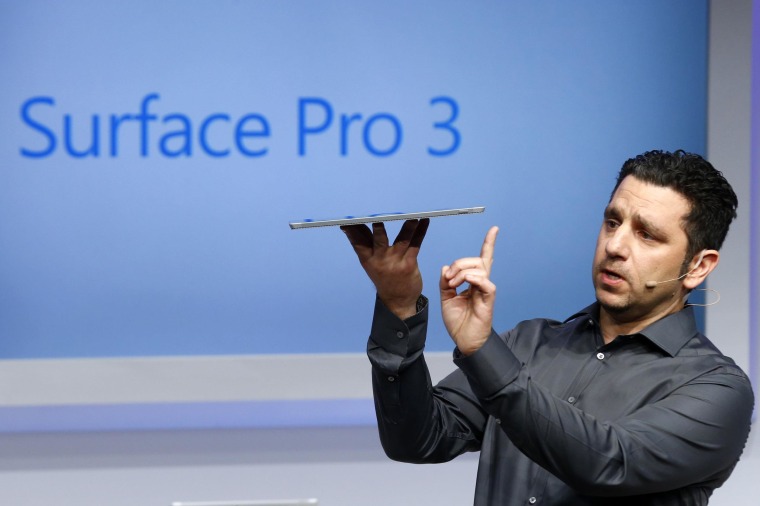Microsoft wants its products to be accessible to all people in all environments — and the new Surface Pro 3 tablet is the first device meant to embrace this new philosophy.
The 12-inch Surface Pro 3 is Microsoft's effort to combine the portability of a tablet with the power of a laptop — a device that works for both casual computing and serious work, on the train and literally on one's lap.
"We want to make products and technologies that allow people to get more out of every moment in their life," Microsoft CEO Satya Nadella said at the Pro 3 unveiling event on Tuesday in New York City.
Nadella discussed his dream for Microsoft's future as a company that focuses on mobile first, and puts its services wherever its customers may be. After replacing Steve Ballmer at the helm in February, he's been busy working on the software piece of that goal, with products like Office for iPad.
The Surface Pro 3, which starts at $799 and goes on sale Wednesday, is the first step on the hardware side.
Microsoft's Surface chief spoke at length about the "conflict" between the ease of using a tablet and the productivity power of a laptop.
Microsoft Surface chief Panos Panay led most of the event, and he spent a large portion of his discussion talking about the two main ideas that powered the plan for the Pro 3.
First, he spoke at length about the "conflict" between the ease of using a tablet and the productivity power of a laptop: Tablets are casual and light, but they're not really ideal for sitting down to do heavy work like a laptop is.
"Three years ago, there were a bunch of people in a room just like this, and they were writing stories ... the tablet was going to kill the laptop," Panay said, referring to the journalists in attendance. Instead, Panay pointed out, 99 percent of the reporters covering the event were using laptops.
"You're being told to buy a tablet, but you know you really need a laptop," he said.
On the tablet-like side, the Pro 3 weighs only about 1.76 pounds — lighter than the 2.38-pound 11-inch MacBook Air — and it's thinner and lighter than its predecessor.
Its laptop-like features include a powerful processor, a magnetic keyboard, a stylus pen and a larger screen — 12 inches versus the 10.5 inches on the Pro 2 — that Panay said is "critical" to using the tablet for work.
The 'lapability' factor
Panay's second big theme: The Surface Pro 3's special hinged kickstand makes it easier to use in all sorts of environments. He demonstrated using the tablet on his lap, continually touting the device's "lapability."
"Today we take the conflict away — I'm absolutely sure of it," Panay said.
If customers agree, the third time could finally be the charm for Microsoft. The first Pro debuted in early 2013 to mixed reviews. Critics responded more positively to the Pro 2, but most concluded it couldn't really replace a laptop.
Despite the better reviews for the Pro 2, Microsoft was forced last summer to take a nearly $900 million writedown on Surface. Microsoft is hoping the Surface Pro 3 will be the generation to propel the Surface family into the mainstream.
For now, at least, the Surface Pro 3 is the only new tablet from Microsoft. The company's press invitations for Tuesday's event — which invited journalists to a "small gathering" — kicked off speculation that a Surface Mini would be the big announcement.
